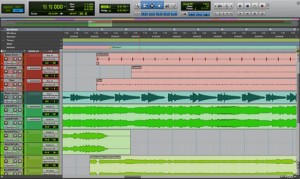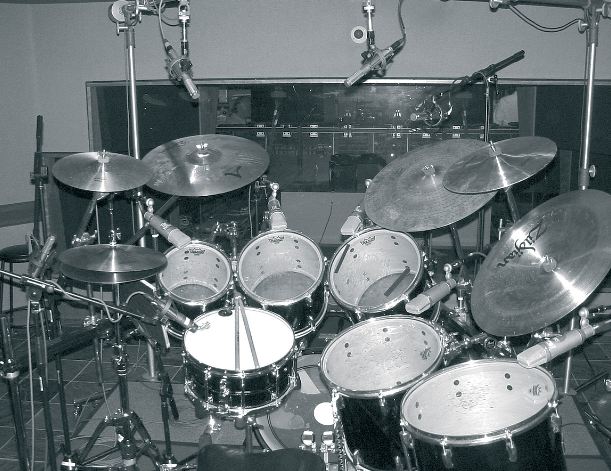 Being willing to listen, really listen to the audio, and not just “feeling the song” is the most important if you are an engineer, but that’s not something that falls under a “music recording quick tip” which is what I’m tasked to do, so we can talk about that later.
Being willing to listen, really listen to the audio, and not just “feeling the song” is the most important if you are an engineer, but that’s not something that falls under a “music recording quick tip” which is what I’m tasked to do, so we can talk about that later.
Recording and Mixing Stacks (the right way)
If you want a wall of electric guitars and someone ever told you to copy and past the track a couple times and simply nudge the audio so it “sounds doubled” then you have my permission to punch them in the face (or at least slap them on their ear).
Literally doubling a track by copy and pasting the audio is a poor man’s chorus – it’s not stacking and not true doubling – it’s not even a proper chorus. Yes, you can get a decent sound with a doubler plugin (basically copies and pastes, then applies a chorus on top of that to give more modulation variance to the signal), but that’s still doing it the poor-man-who-has-a-few-plugins way. You want to do it right, because doing it right makes your mix sound better.
Stacking tracks happens during the recording sessions, not the mix. It literally means telling the musician (excuse me, “asking” the musician, they always have to think that they have a say in the matter or they’ll throw a tantrum), to record the same parts over and over again on different tracks. (One reason why common practice is to just record everything, even when they’re rehearsing because you might get some pieces for making comps as well as stacks.
For proper vocal or guitar stacks you are recording the same parts at least three times, preferably 5 or 6 if you want, literally, “walls of sound”. For guitars you stack them around 4 takes, and can pan L/R. (FOr rhythm tracks, no leads). Background vocals are usually stacked as well. If there are harmonies… yup… stack those, too. Even if you don’t end up using them in the mix, at least you have them on tape so that you and/or the producer have the material to be able to make that decision. For stacking background vocals, if there are harmonies, record at least each harmony twice (for L/R panning, then stacking those with each harmony part in the track). With all this stacking, now you can see why when we only had 20 or so tracks to work with that it was not enough and bouncing submixes was a daily treat in a recording studio.
And remember that you’re using a digital audio workstation (most likely, anyway), so you can do this very, very quickly. Just create a dozen or so new audio tracks, get the input set up on the first track, arm it and record. Then once you’re done with that take, just drag that audio region down to one of the other empty tracks and start again recording on the armed track.
Guitar and vocal stacks to NOT have to be perfect takes. I had one vocalist (who was scary this way) who sang the same parts IDENTICALLY each time… it was freaky. She was soooo technical (which I personally don’t like that much) that her stacks were almost exactly the same which made it sound more like phasing that stacks. The point is that they are NOT exactly the same – that’s how the listeners ears and brain separate them out and thusly builds up the intensity of that part of the mix.
Note on background vocal stacks: it’s OK to compress the SH*T out of them (especially if they are all panned, because our slow brains don’t perceive compression as much if it’s just hitting one ear; you can often times limit the crap out of them – BUT BE CAREFUL nothing is worse than hearing over-compression. If you don’t hear it, fine, but if you hear it, then pull back on the settings). You also don’t have to EQ background vocals so that they sound “perfect” when solo’d. You can use stacked vocal stacks in the hook to fill out frequency areas that are lacking in your mix to help make it full.
Also be VERY careful about your low end (anything below around 250hz) since you’re working with a lot of “instruments” playing the same part, if you allow them all to have a lot of low end, then your mix will get out of control very fast.
Also note that you don’t always want to pan your stacks HARD left and right in your mix. Oftentimes a 40-60% pan towards either side is enough, so long as they are distributed equally on each side so that people won’t start leaning to one side and fall over if they are listening to your mix on headphones.
Published: by | Updated: 09-22-2012 11:00:02





















